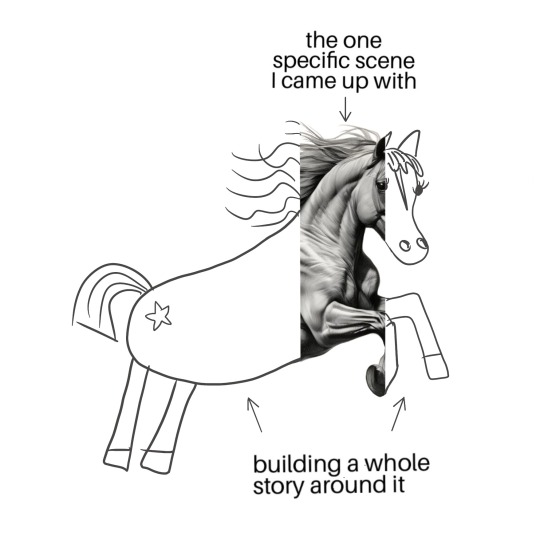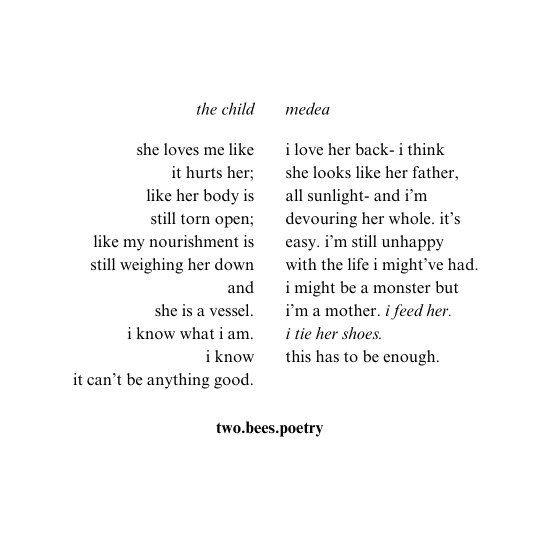Text
Two roads diverged in a wood, and I— I took the one that added 35k extra words to the projected length of this fucking story ahgeilahgleiag
8K notes
·
View notes
Text
“i liked it before it was cool” well i liked it AFTER it was cool when everyone abandoned it
177K notes
·
View notes
Text
“do you think your book will get published?” i think it’ll get finished one day, maybe.
426 notes
·
View notes
Photo

He got mistaken for a waiter and was delighted by it.
I can’t
9K notes
·
View notes
Text
Hesperides
Is the place of dreams, Hesperides is the place of nightmares.
Come to the beach as the sun sets over the mainland and see the shadows of the roaming beasts, some as large as the city you stand in.
Come see the founding place of the religion of [[]] , come see the pond where the gods lay waiting for people to come find them.
Come all those of other faiths, for the welcoming isle cares not what you believe, only that you test that belief on the beaches of white sand and distant horrors.
Come Kings, come nobles, come those of a simple life. Come, and be humbled, and remember how small we all are, alone or together.
Come see them, and find them evermore in your dreams after you leave. Come here.
For there be monsters.
-A note from a banished jester to his former court, about the island of Hesperides, otherwise known as the humbling isle.
There is a small monastery city on the island, and some surrounding farms. The city is run by the church of Piscis, a water-based religion who believed the Gods were waiting for people to find them in a Pond on the Island.
This species of fish is said to have given the first Priestess visions and messages that saved her people. They are a highly, colorful fresh water species and it is forbidden to harm or eat them. Their ponds are maintained by the church and pilgrims are allowed to see them only with supervision.
All other fishing is considered a holy venture and is encouraged to happen as a type of prayer activity, as is singing.
Singing on the beach while looking at the mainland (and possibly catching sight of some of the megafauna that live there) is a nightly activity that is supposed to ward off evil.
The Chorus of the island is known far and wide, with many performers finding great renown after taking the opportunity to come and learn from the priestesses.
2 notes
·
View notes
Text
what bugs me most about the idea that the Hero's Journey is "universal" is that the closest thing to an actual "universal" story that exists is CINDERELLA.
And what's the point of Cinderella? That she leaves. She goes to the castle and becomes a princess and LEAVES the place she started.
She does not "return changed." She does not do the Hero's Journey.
You do not get to call your theory universal if you can't account for freaking Cinderella.
9 notes
·
View notes
Text
Whenever an artist who makes dark content gets outed as a sexual predator people will be like 'aha it was obvious something was up because their work was so dark and nasty' and whenever an artist who makes wholesome content gets outed as a sexual predator people will be like 'aha it was obvious something was up because their work was so aggressively wholesome' and it's like you know I think maybe you can't tell whether or not someone is a predator based on their artistic output.
40K notes
·
View notes
Text

Writers when it's time to write the story no one forced them to come up with in the first place 🙄
16K notes
·
View notes
Text

THE SWIMMING PIC HAS ME SOBBING 😭😭
212K notes
·
View notes
Text

So many paths to follow and no wizard gps...
19K notes
·
View notes
Text
Progress and stuff
I failed the 90k in 90 days challenge that I was doing with a few friends. Pretend to be shocked for my ego, please.
Honestly, I don't think any of us managed to get it done what with Halloween, Christmas and Thanksgiving(for the Americans in our number) falling during it. Probably a terrible time of year to try it. There's already talk of trying again next month.
I didn't do too bad, managed around 70k, which is a definite win for me. It's up to 72k now and is, without exception or question, the furthest I have managed to get into a draft this year.
Part of that was the challenge, and part of it was that I am using an outline. I tried this several times before without any joy because those strict 27 chapter, 3 act, 1200 step rigid things never worked for me. I get that they do work for some people but for me it felt like trying to breath in a plastic bag.
Instead, I found the things from the South Park boys really helpful (surprising as I was never really a fan of the show). The whole one things must lead into another, 'BUT' or 'THEREFORE' between each plot point. That's it. That's the whole thing. And it worked!
Now mind you I did just reach a point where I have to change the outline because of a character decision but instead of happening on chapter 2, it's happening one chapter 19 and I can still keep most of what I have going forward. What's the book about?
It's a high-fantasy where there's a forest taking over and killing people. It's about 3 sisters, and the strict regency-era-like society trying to adapt to their changing world. Think about the girls going to work in the factories in WWII but those changes happening in an even stricter society for women. One sister is avoiding a marriage, one is working in the military and has a giant raven who is a dickhead, and one of them faked her death seven years ago and is now living in the deadly forest.
Also dryads, because I love me some dryads.
The world-building isn't as intense as my island-world (see previous posts) but there's still enough to keep me going. Standalone as well instead of series - thoughts of a second possible plot as banished to the back of my brain - because I just need to finish something this year.
1 note
·
View note
Text
Hey so that was a great date, yeah, but I don't think it's going to work out. Nono you didn't do anything wrong, and I have indeed had a crush on you since we started high school, it's just... well, I didn't want to bring it up at the time but we kinda got sucked into a portal fantasy midway through. We saved the kingdom over and over, relying on our knowledge of and trust in each other every time, throwing ourselves into the firing line to protect each other and using each others' conviction as a rock. We got married and lived a happy life together until the portal sucked us back mid-battle and you gave up all your memories of our journey in order to save my life right when we ended up back in the coffee shop. Yeah that was when I got a bit weird and went to the bathroom.
Anyway I thought we could push on and make the date work but I have all of these memories of secrets that this you never chose to share, decisions that this you never made, and intimacies that this you never experienced. And it's kind of screwing with the vibe yeah. Also on the date it was really, blatantly clear that you're sixteen whereas I have memories of ruling a fantasy kingdom for thirty years so like... that's a problem all on its own. Anyway this you just feels more like a daughter to me. A daughter with the woman I gave my heart and soul to over and over and received like in return, only to lose her forever on the journey home. On the plus side I can definitely help you with your math homework now.
28K notes
·
View notes
Text
hyperfixation please stay with me long enough to complete the project. hyperfixation do not fade. hyperfixation finish what you started for the love of god
110K notes
·
View notes
Text

feeling called out today
credit: _ADWills
102K notes
·
View notes


